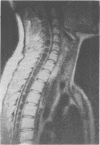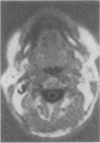Abstract
The severity and distribution of symptoms and signs in patients with syringomyelia is considered to be dependent on the longitudinal and transverse dimensions of the syrinx and it is thought that clinical examination can identify the extent of the cyst. Magnetic resonance imaging has made the anatomical localisation of intramedullary spinal lesions more exact and probably more specific than previous methods of investigation. Syrinx length, diameters, cyst:cord and cord:canal ratios have been studied in 12 patients with syringomyelia to assess whether the dimensions of the syrinx relate to the clinical findings. The length of syrinx appeared to be related to cyst diameter, cyst:cord and cord:canal ratios. Patients with a small syrinx tended to have a small cyst diameter, and small cyst:cord and cord:canal ratios. No significant relationship was found between muscle wasting or weakness, distribution of sensory loss, degree of disability or distress and the dimensions of the syrinx. These findings should be borne in mind when surgical management is being considered.
Full text
PDF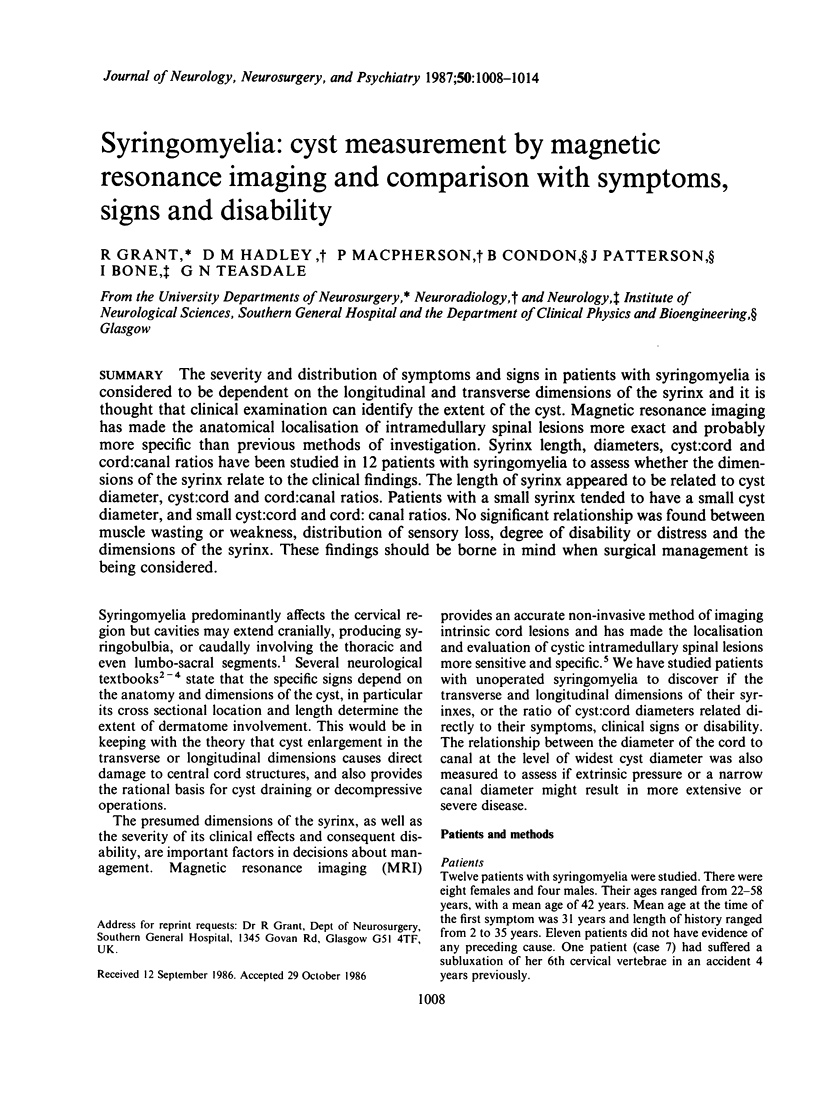
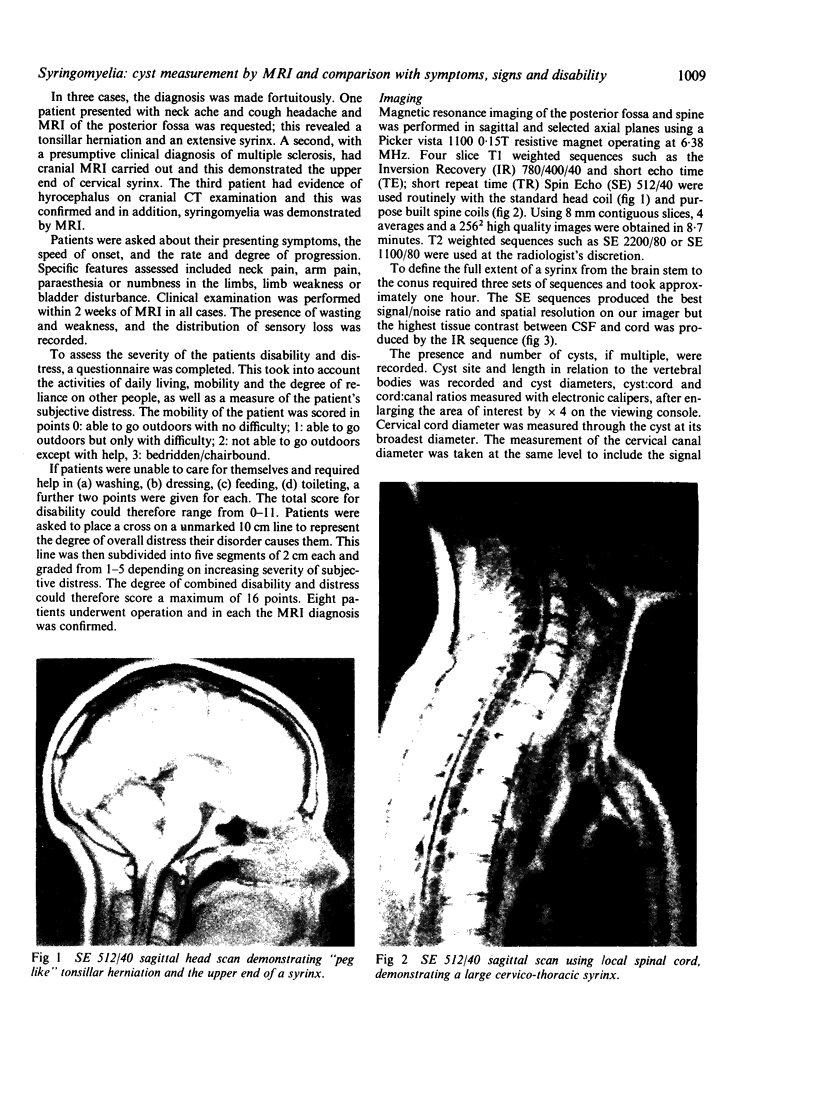
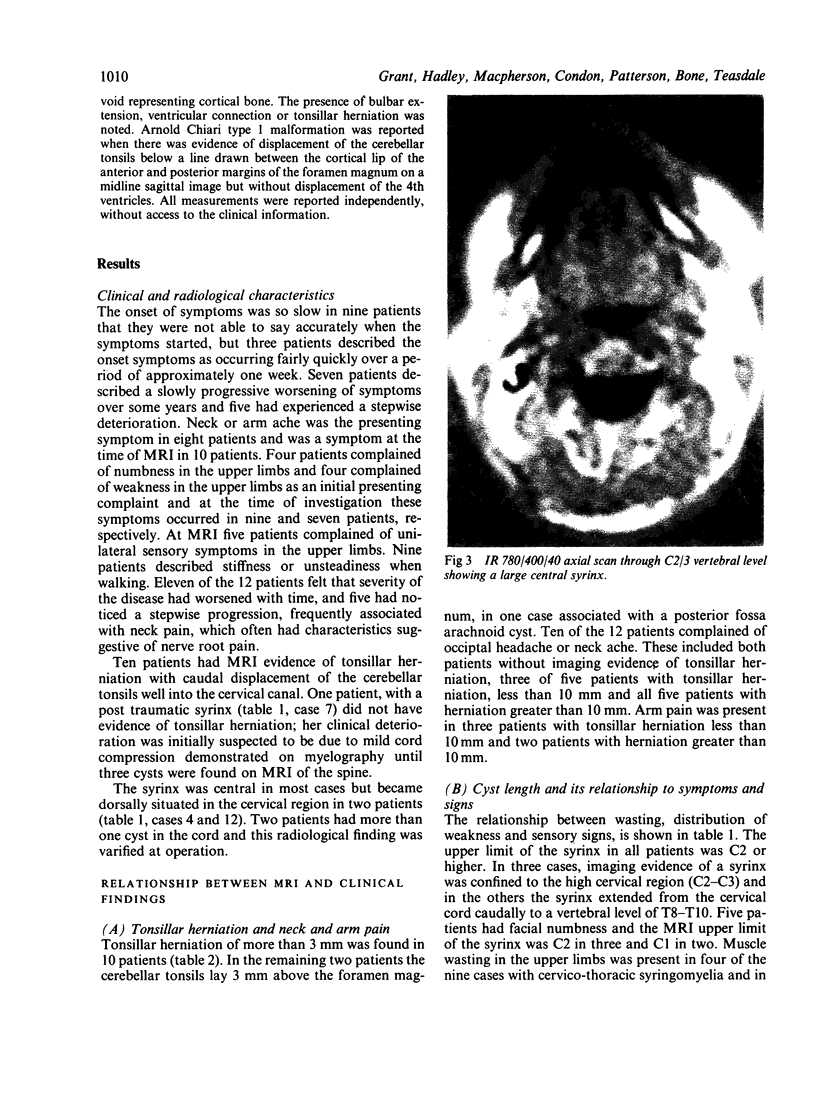
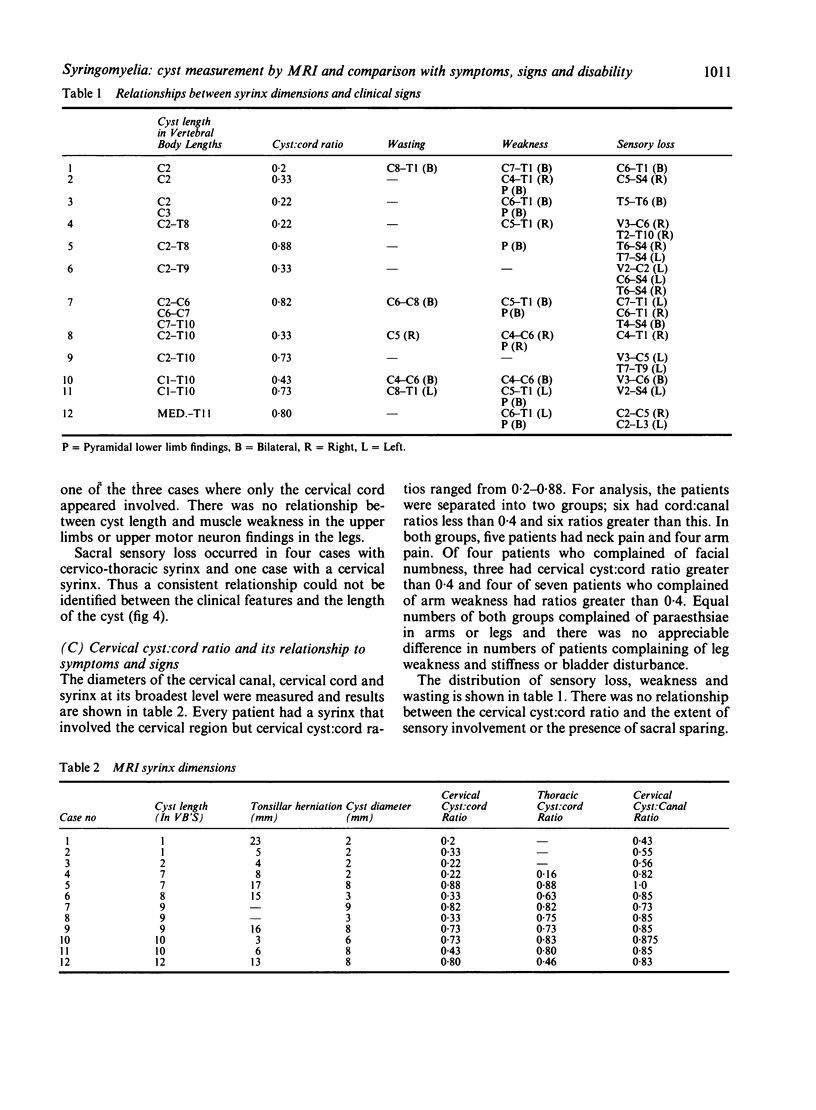
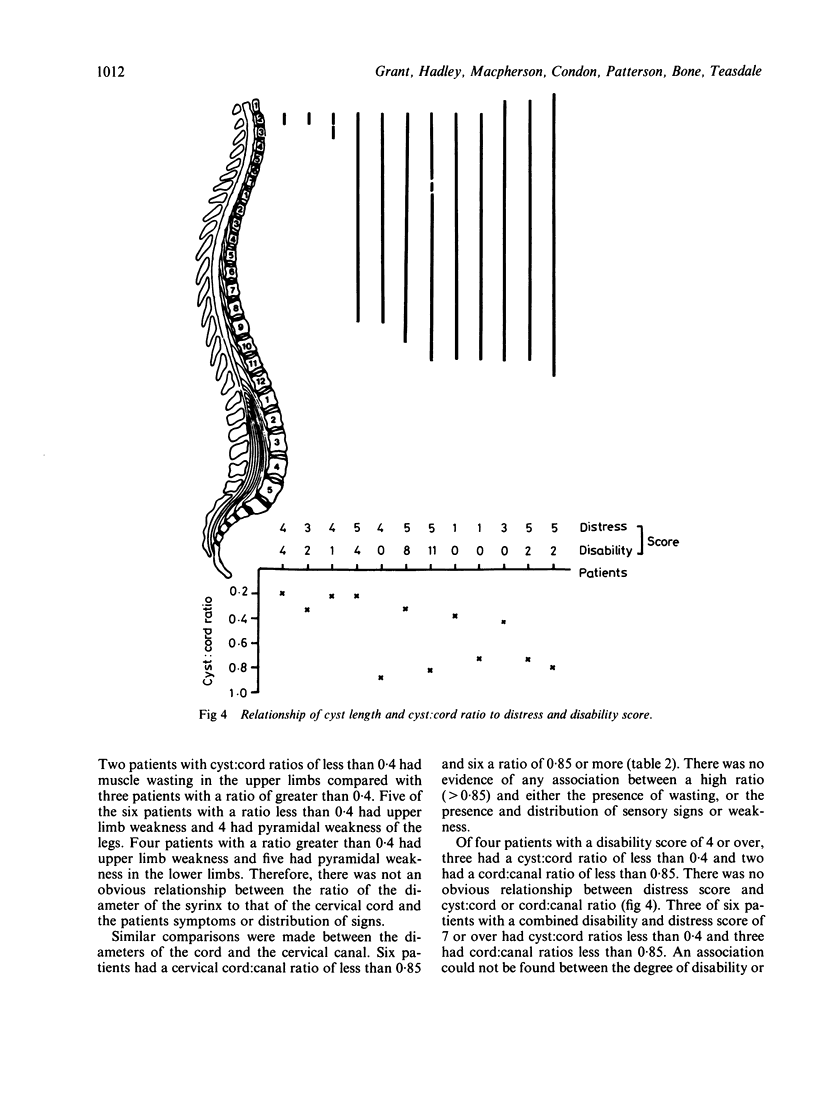
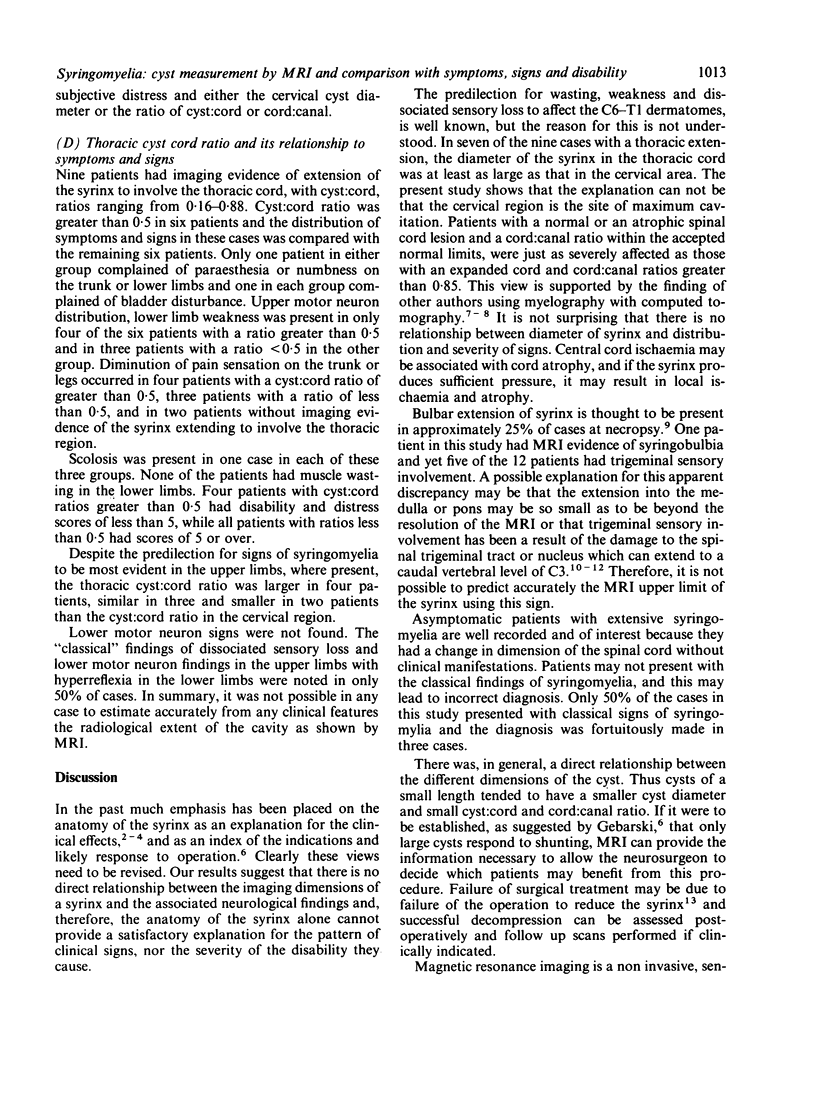
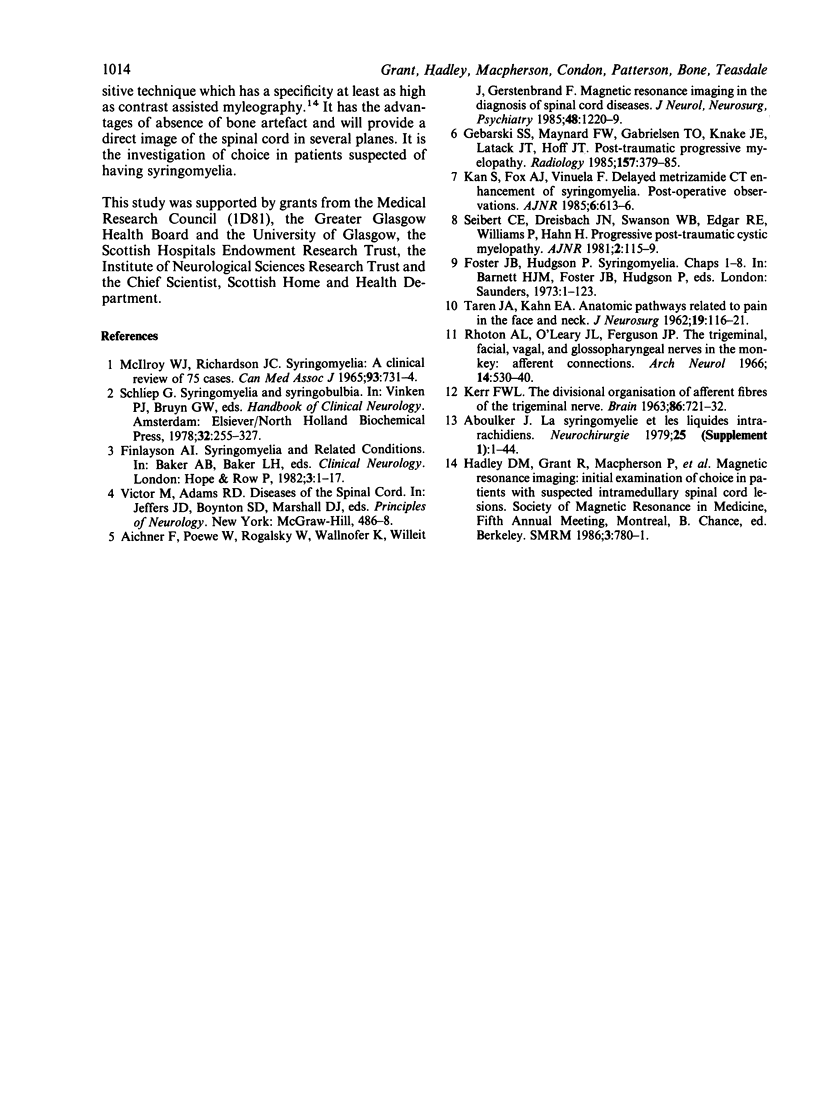
Images in this article
Selected References
These references are in PubMed. This may not be the complete list of references from this article.
- Aichner F., Poewe W., Rogalsky W., Wallnöfer K., Willeit J., Gerstenbrand F. Magnetic resonance imaging in the diagnosis of spinal cord diseases. J Neurol Neurosurg Psychiatry. 1985 Dec;48(12):1220–1229. doi: 10.1136/jnnp.48.12.1220. [DOI] [PMC free article] [PubMed] [Google Scholar]
- Gebarski S. S., Maynard F. W., Gabrielsen T. O., Knake J. E., Latack J. T., Hoff J. T. Posttraumatic progressive myelopathy. Clinical and radiologic correlation employing MR imaging, delayed CT metrizamide myelography, and intraoperative sonography. Radiology. 1985 Nov;157(2):379–385. doi: 10.1148/radiology.157.2.3901106. [DOI] [PubMed] [Google Scholar]
- KERR F. W. THE DIVISIONAL ORGANIZATION OF AFFERENT FIBRES OF THE TRIGEMINAL NERVE. Brain. 1963 Dec;86:721–732. doi: 10.1093/brain/86.4.721. [DOI] [PubMed] [Google Scholar]
- Kan S., Fox A. J., Viñuela F. Delayed metrizamide CT enhancement of syringomyelia: postoperative observations. AJNR Am J Neuroradiol. 1985 Jul-Aug;6(4):613–616. [PMC free article] [PubMed] [Google Scholar]
- McIlroy W. J., Richardson J. C. Syringomyelia: a clinical review of 75 cases. Can Med Assoc J. 1965 Oct 2;93(14):731–734. [PMC free article] [PubMed] [Google Scholar]
- Rhoton A. L., Jr, O'Leary J. L., Ferguson J. P. The trigeminal, facial, vagal, and glossopharyngeal nerves in the monkey. Afferent connections. Arch Neurol. 1966 May;14(5):530–540. doi: 10.1001/archneur.1966.00470110074010. [DOI] [PubMed] [Google Scholar]
- TAREN J. A., KAHN E. A. Anatomic pathways related to pain in face and neck. J Neurosurg. 1962 Feb;19:116–121. doi: 10.3171/jns.1962.19.2.0116. [DOI] [PubMed] [Google Scholar]



